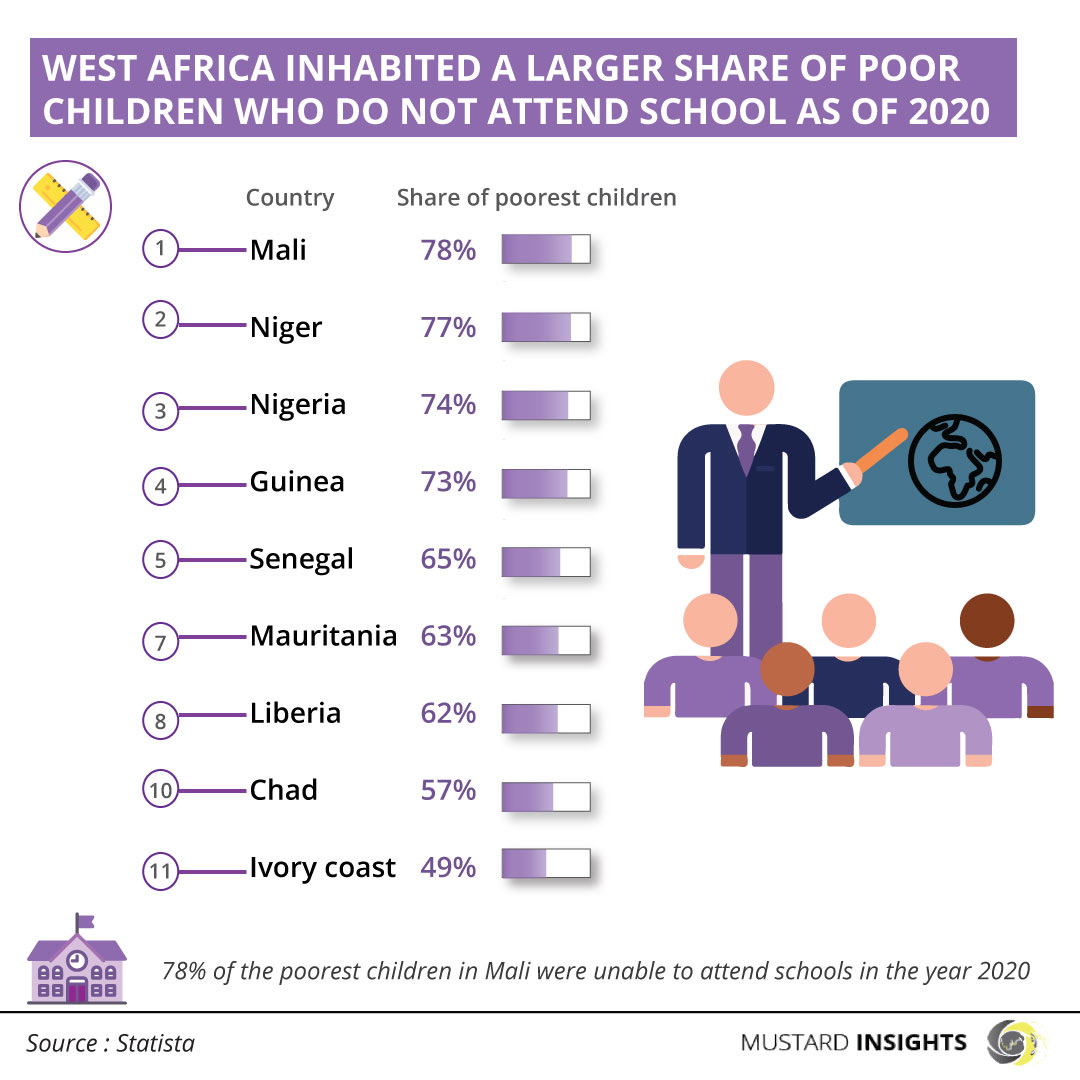The percentage of poor children in West African countries undermines efforts to provide children access to education. Mali ranks #1 in West Africa with 78% of its poor children not attending school, according to Statista.
In Africa, education remains inaccessible to millions of children. Out of the many barriers that could hinder quality education, poverty is a prominent root cause for lack of education.
Education is pivotal to development in many developed countries. As countries strive to achieve universal primary and secondary education by 2030, the UNESCO Institute for Statistics (UIS) is providing the data and analysis needed to reach the children and youth who remain excluded from education.
Breakdown and Key Metrics
According to Statista, over 70% of the poorest children living in Mali, Niger, Nigeria, and Guinea do not attend school. Overall, Sub-Saharan Africa has the highest illiteracy rate in the world. Countries in East and West Africa suffer from high levels of poverty, including health, malnutrition, lack of clean water and electricity, poor education, and other similar aspects.
Of all regions, sub-Saharan Africa has the highest rates of education exclusion. Over one-fifth of children between the ages of about 6 and 11 are out of school, followed by one-third of youth between the ages of about 12 and 14.
According to UIS data, almost 60% of youth between the ages of about 15 and 17 are not in school. Over time, without urgent action, the situation will probably get worse as the region faces a rising demand for education because of a still-growing school-age population.
Exclusion of girls from access to education is another challenge. UIS data show that 9 million girls between the ages of about 6 and 11 will never go to school at all, compared to 6 million boys. The disadvantage of the girl child starts early, with 23% of girls already out of primary school compared to 19% of boys. By the time they become adolescents, the exclusion rate for girls is 36% compared to 32% for boys.
The United Nations Educational, Scientific and Cultural Organisation (UNESCO) recommend governments of nations allocate at least 20% for education. Mali’s education budget is about 16%. Although, the country is suffering from inadequate funding in the education system and war conflict in some zones pushed the share of poor children to 78% in 2020; the highest in West Africa.
Second on the list is Niger, with 77% of its poor children not attending school. The country’s budget for education was around 16% but made only 7% available. Nigeria, in third, has 74% of its poor children not attending school and an educational budget around 7.12%, which is far below the United Nations Children’s Fund
(UNICEF) recommendations.The percentage of poor children not attending school in Guinea and Senegal are 73% and 65%, respectively
Takeaway
The alarming rate of poor children in Africa who cannot attend school is a growing concern that needs correction. Education in Africa is a major priority for UNESCO and the UIS, in their strive towards Sustainable Development Goal 4 (SDG 4) and to reach the most marginalized children and youth.
Thoughts?
We won't share your email address. All fields are required.

